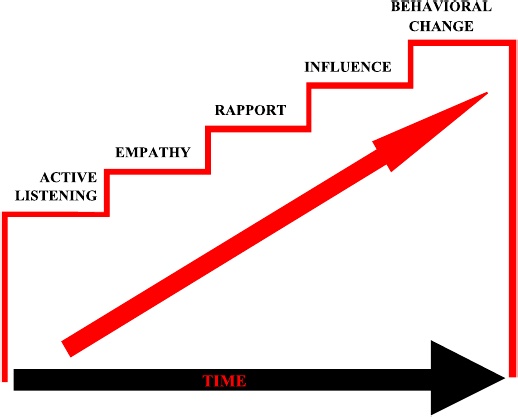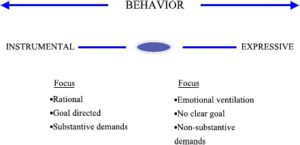Chris Voss, former FBI hostage negotiator, in his book, Never Split the Difference: Negotiating as if your life depended on it, talks about the following negotiation techniques developed at the FBI.
However, the following comes from this Stanford page: https://gdt.stanford.edu/what-can-the-fbi-teach-us-about-behavior-design/

The FBI Hostage Negotiation Team developed a five-step Behavior Change Stairway Model to assist in negotiation with sometimes violent felons. But these same techniques can be used in any number of more peaceful situations.
Behavioral Change Stairway Model
- Active Listening
- Empathy
- Rapport
- Influence
- Behavioral Change
Most critical step is Active Listening:
- Ask open-ended questions
- Effective pauses (remain silent at the right times)
- Minimal encouragers (brief statements like yes and okay that let them know you are listening)
- Mirroring (repeat the last word or two they say)
- Paraphrasing (repeat what they said in your own words)
- Emotional labeling (give their feelings a name)
The model came out of this paper, which contains some deeper insights.
Behavior Continuum:
Core Active Listening Skills
- Mirroring
- The “gist”
- Last couple of words
- Paraphrasing – put meaning into your words
- Emotional labeling
- Identify the feeling
- “You sound…”
- “You seem…”
- “I hear…”
- Summarizing.
- Restating the content of the emotions of the person’s story
- Combining the information obtained during paraphrasing and emotion
SUPPLEMENTAL ACTIVE LISTENING SKILLS
- Effective Pauses
- Silence
- Used immediately or after saying something meaningful
- Minimal encouragers
- Indicate your presence and attention to subject
- “uh-huh…yes…right…ok”
- “I” Messages
- “When you say…I feel…”
- Open-Ended Questions
- “What…?”
- “When…?”
- “Tell me more…”
- “I’d like to hear more…”

